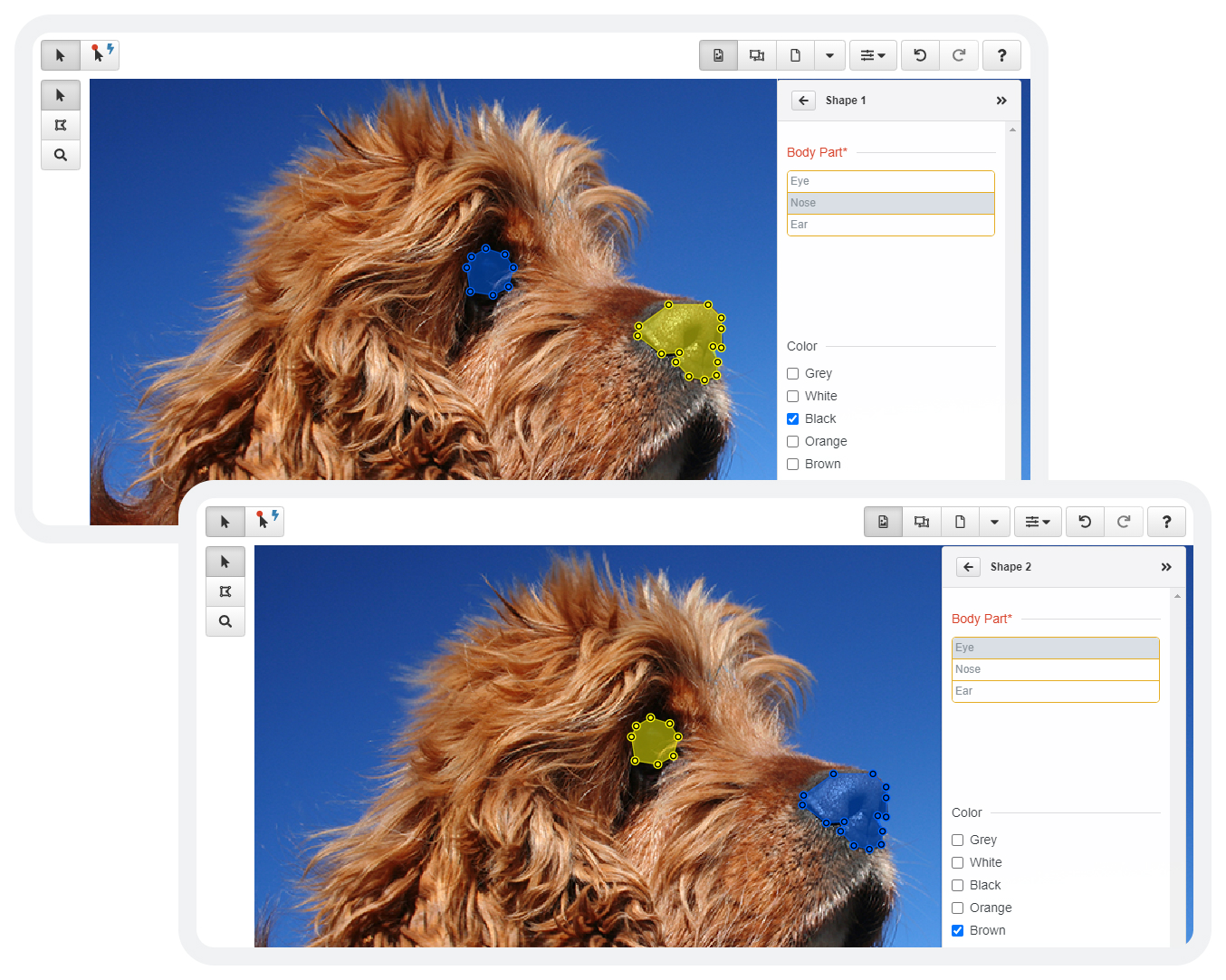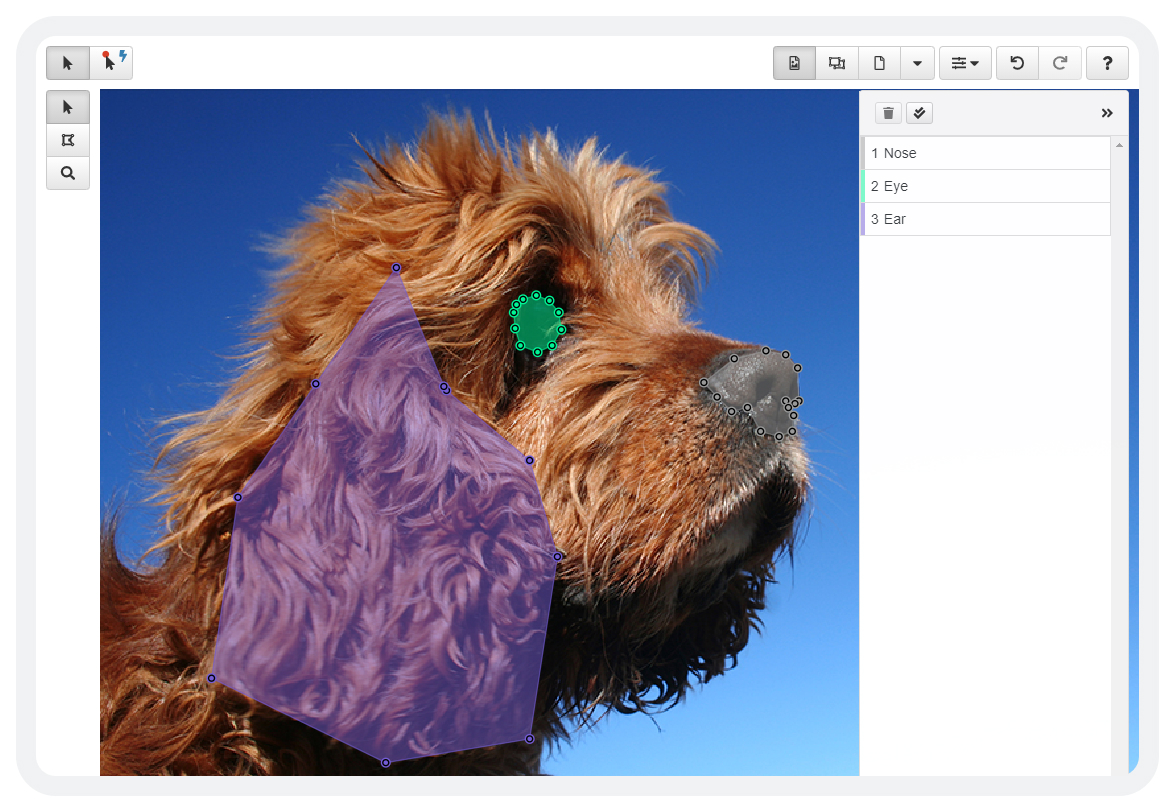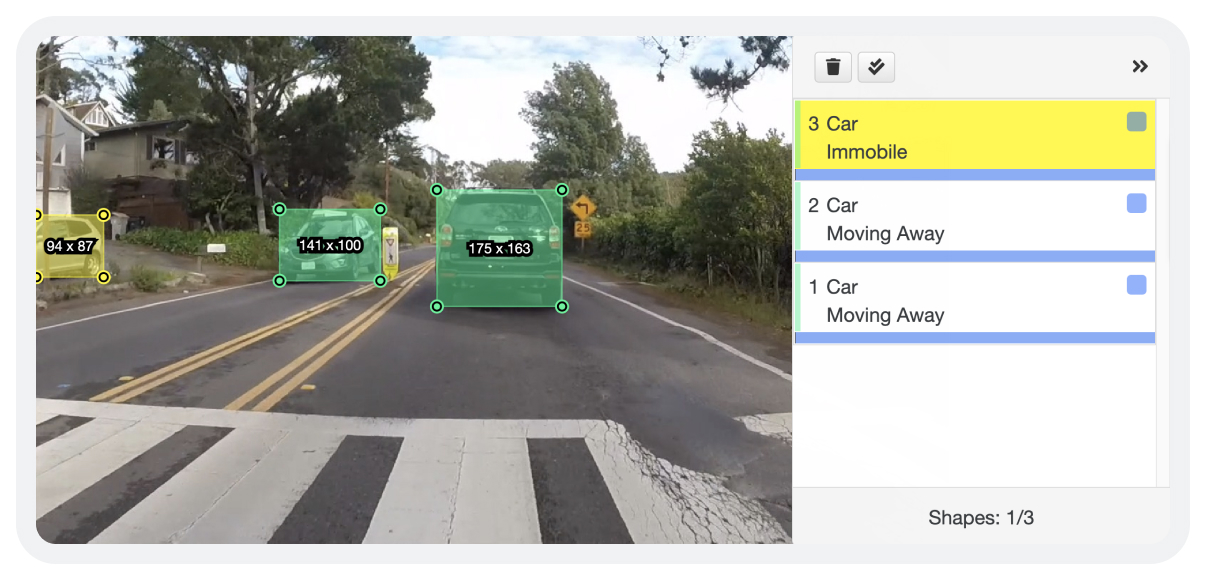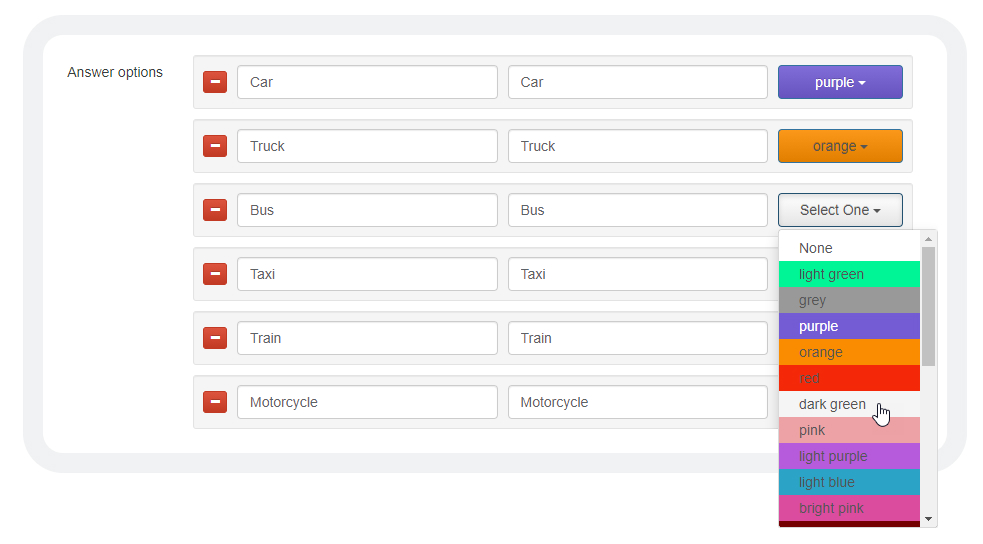Shape outputs
Updated at January 12th, 2024
A shape output only applies to shapes that are drawn on a workspace output, instead of to the entire workspace. When an annotator clicks on a shape, the shape outputs will appear in a sidebar within the workspace output. Here, different answers can be provided for each different shape.
Any of the scene output types can be used as a shape output.
📘 Note
Shape outputs are sometimes called "nested outputs", because they're "nested" inside a workspace output or because they appear as a nested object in the JSON output file. If you see that term in the interface, know that it refers to shape outputs.

Colors
You can also assign colors to the answer options for a shape output. When an annotator clicks on a particular shape and selects an answer option, the shape will turn whatever color is associated with that answer. Colors are typically used for shape outputs that ask an annotator to describe what is pictured within the shape. For example, you could configure the shape to turn red if the annotator says that the shape contains a car, or blue if the shape contains a pedestrian.
📘 Note
Since a shape can only have one color, colors can only be used with one shape output in each workflow. Similarly, the shape output must only allow the annotator to choose one answer. Otherwise, the shape wouldn't know which one of the multiple colors it should be!

Static/Dynamic
Lastly, if you are using a Point Cloud, Sensor Fusion, or Video output as your workspace output, you will need to decide whether your shape outputs should be static or dynamic. Because these workspace outputs are all types of recordings that progress over time, the characteristics of your shapes may not remain the same throughout the full duration of the recording. As a result, you can make your shape outputs either:
- Static: Only one answer can be provided for the output, which will apply to the entire length of the recording.
- Dynamic: Multiple answers can be provided for the output, which will apply to different portions of the recording. For example, for an output asking about occlusion, the annotator could select different percentages at different timestamps, depending on how occluded a particular shape is.

Configuring shape outputs
To configure shape outputs:
- Create and configure a workspace output in which you want your shape outputs to appear. See Workspace outputs.
- Create and configure one or more scene outputs that you want to use as shape outputs. See Scene outputs.
- In the Outputs tab, in the sidebar, click on the workspace output.

- In the Answer options section, add one answer option for each shape output. In the Label field, enter the exact name of the shape output, prefixed with a #. In the Value field, enter the heading for the shape output that you want to display to annotators.
👍 Tip
If you want the answer for a particular shape output to be hidden from the sidebar summary, do not prefix the name of the shape output with a #. For example, in the image below, entering "Motion Status" instead of "#Motion Status" in the Label field would hide the "Immobile" answer for shape 3 from the sidebar, as well as the "Moving Away" answers for shapes 2 and 1.


- If you would like to assign colors to the shapes, select the radio button next to the shape output that you want to use colors with. If not, just leave the radio buttons blank.

- If you are using a Point Cloud, Sensor Fusion, or Video workspace output, click in the drop-down for each shape output and select either Static or Dynamic (if you are using an Image Annotation workspace output, this drop-down will not appear).

- Click Save.
- If you are using colors, click on the shape output in the sidebar that you want to use colors with.

- In the Answer options section, click on the drop-down beside each answer option and select a color. When an annotator clicks on a shape and chooses this answer, the shape will turn that color.

- Click Save.
